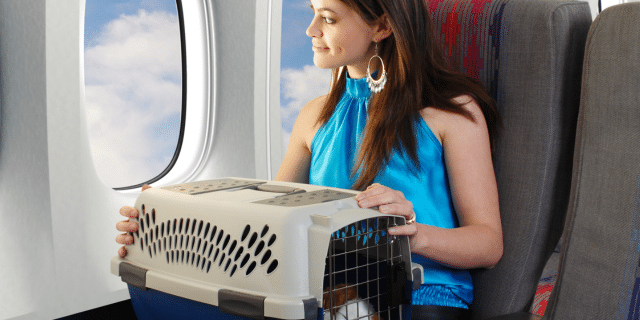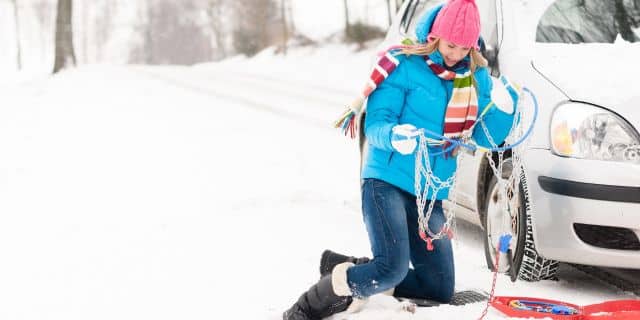by California Casualty | Safety |
Halloween is less than a week away… but on the East Coast, something far scarier is brewing.
As Hurricane Sandy sets her sites on our shores, meteorologists warn that the hurricane conditions could mix with a winter storm to create a hybrid superstorm.
Due to the storm’s hybrid nature, and its Halloween-timed landfall, news agencies have dubbed it…
The Frankenstorm.

but for every Frankenstorm, we of course need…
Frankensafety.
But… how exactly does one prepare for a storm that is an unprecedented mix of both winter and hurricane conditions?
We thought you might ask.
Since reports are all over the map–with some saying the storm will be a dud and others calling it the storm of the century–we’re going with the prepare for all possibilities plan.
Frankenstorm is a two-headed beast. So below are some safety and preparation tips to tackle both hurricane safety and winter storm safety ‘head on.’
Hurricane Safety Tips:
- Build an emergency kit. Tips for building the kit can be found here
- Learn the elevation of your property and whether it is flood-prone
- Study community hurricane evacuation routes
- Know where you would go if a hurricane hit
- Make a plan on how to evacuate. A downloadable Family Emergency Plan can be found here. Print it off and complete it.
- Practice your plan
- Develop a plan for your pet. A great list of steps and supplies from the Federal Alliance for Safe Homes (FLASH) can be found here.
- Don’t forget about your business. Hurricane preparation does not end at home. Here is a great Business Survival Plan from the National Hurricane Survival Initiative
- Pay attention to the news. Know the guidelines of when you should evacuate and when you should stay. A good guide from the National Hurricane Survival Initiative can be found here.
- Cover all your home’s windows.
- Brush up on your watches and warning terms. That way, you’ll understand the risk and can better make safety and evacuation decisions. A good review from FLASH can be found here.
- Install straps or clips to securely fasten your roof to your frame structure to reduce wind damage
- Keep trees well-trimmed
- Clear loose or clogged rain gutters
- Reinforce your garage doors
- Bring in ALL outdoor furniture, decorations, garbage cans and similar items that are not tied down
- If you live in a high rise, prepare to take shelter on or below the 10th floor
- Print out and LAMINATE (to protect from water), tips for what to do during and after a hurricane and put them with your safety kit. You can find “during and after a hurricane” tips here.
- Check your property insurance policy for appropriate coverage. Here’s some information on California Casualty’s coverage and here’s some information on flood insurance-an important factor in Hurricane recovery.
Winter Storm Safety Tips:
- Prepare an emergency kit. Click here for tips.
- Add these winter-storm specific items to your existing kit:
- Rock salt or other products to melt ice on walkways. Here’s a list of recommended products from the EPA.
- Sand to improve traction
- Snow shovels and snow removal equipment
- Heating fuel in case you lose power. Be sure to store good, dry wood for your fireplace or stove
- Adequate clothing and blankets to keep you warm
- Read, print off, and laminate this Red Cross Storm Safety Checklist. Make sure you have a safety plan, and that you review it with your children
- If it gets cold and you want to use a heater, be SURE to read these safety tips! Portable heaters cause fires!
- Review these tips for pet safety during a winter storm
- Minimize travel. One of the most dangerous places during a snow storm is roadways. If you can, stay inside.
- Listen to the radio and be aware of changing weather conditions. To brush up on your winter snow storm terms, click here.
This Frankenstorm has the potential to be dangerous and deadly. Please protect yourself, your family and your home. Review your safety and preparedness plan BEFORE the storm hits.
(And in the meantime, we’ll hope it’s just like all those bad horror movies: All hype, no scare.)

by California Casualty | Auto Insurance Info, Safety |
There’s nothing quite like prom and graduation season—the photos, the dresses and tuxes, the flowers, the celebrations. But while your teen may be focused on finding the perfect outfit or planning the after party, you’re likely thinking about something else entirely: their safety on the road.
Here are some tips to help your teen navigate prom, graduation, and all the celebrations in between—safely.
1. Make “leaving early” a habit.
Encourage your teen to leave at least 10 minutes earlier than needed—more if weather conditions are poor. This reduces the urge to speed and gives them time to react calmly to traffic or detours. If they’re heading to the same event as many others, they might also encounter fewer cars and pedestrians if they beat the rush.
2. Limit passengers.
It’s fun to pile into a car with friends, but the more people you have, the more distractions the driver encounters. Set limits on how many friends can ride with your teen and remind them that safety comes before socializing.
3. Always buckle up.
Seat belts are simple but lifesaving. Make sure your teen—and everyone in their car—buckles up before the engine starts. Reinforce the message that seat belts are non-negotiable, even for short trips.
4. Phones down, eyes up.
Phones are one of the biggest distractions for drivers, especially teens. Talk with your teen about putting their phone away while driving. There are apps that can silence notifications, send automatic replies, and even block texts while the car is in motion. Sharing their location with you is also a smart move in case you need to reach them in an emergency.
5. Minimize all distractions.
Texting isn’t the only distraction. Eating, drinking, adjusting the music, or checking makeup can all take attention off the road. Remind your teen to stay focused and wait until they’re parked to multitask.
6. Don’t drive while drowsy.
With finals, late-night celebrations, and packed schedules, your teen may not be getting enough sleep. Driving tired is just as dangerous as driving under the influence. If they feel themselves nodding off, they should pull over in a safe place and rest before continuing.
7. No drinking and driving—ever.
This one may seem obvious, but it bears repeating. Teens should never get behind the wheel after drinking or using any substance. Have an open conversation about peer pressure and agree on a “safe word” they can use if they need you to pick them up—no questions asked.
8. Keep an emergency kit in the car.
Whether it’s a flat tire, dead battery, or a minor fender bender, your teen should know what to do in case of a car emergency. Pack a basic kit with a flashlight, jumper cables, water, a first-aid kit, and emergency contact numbers. Make sure they know how to use everything in it. Teach your teen basic vehicle care and warning signs.
9. Be accident-ready, just in case.
Teens are often accident-prone because of their inexperience behind the wheel. Make sure your teen knows what to do if they’re ever in a crash. Go over the basics together: stay calm, check for injuries, move to safety, call 911, and exchange information with the other driver. Keeping an emergency kit in the car and insurance details in the glove box can also help them feel more prepared and confident.
10. Set a curfew.
More than 40% of fatal crashes involving young drivers happen between 9 p.m. and 6 a.m. It’s not just the challenge of driving in the dark—late-night trips are often social outings where distractions and peer pressure can run high. Even rule-following teens can be tempted to take risks. Setting an earlier curfew than your state requires can help keep your teen safer. Bonus: Offer to drive them and pick them up for late night outings.
11. Control the keys.
When teens have to ask for the car, it naturally opens the door for conversation. It’s a built-in pause that gives parents a moment to check in—about where they’re headed, who they’ll be with, and when they plan to return. It’s also a subtle reminder that driving is a privilege, not a right, and that responsibility comes with it. Keeping the keys in your hands helps reinforce expectations and encourages accountability.
12. Monitor risky behavior.
Consider a monitoring device or app that can track risky behaviors such as speeding, abrupt acceleration and sudden braking. You can also keep tabs on your teen’s location with GPS tracking. Some systems have a silent alarm so your teen can signal SOS if they feel unsafe.
Finally, this is a good time to review your insurance. Is your teen properly covered? Have you discussed all the ways you can save with a teen driver? Ensuring your policy is up to date can give both of you peace of mind during this high-risk season.
Prom and graduation are once-in-a-lifetime milestones, and you want your teen to enjoy them to the fullest—safely. Start the conversation early, model safe driving behavior yourself, and let them know you’re always just a phone call away. Your guidance and trust go a long way in helping them make smart decisions behind the wheel.
This article is furnished by California Casualty, providing auto and home insurance to educators, law enforcement officers, firefighters, and nurses. Get a quote at 1.866.704.8614 or www.calcas.com.

by California Casualty | Pets, Travel |
Whether your pet is a seasoned jetsetter or a first-time flyer, navigating air travel with a four-legged friend takes planning, patience, and know-how. From booking the right seat to ensuring a smooth security check, here’s how to make flying with your pet a paws-itively stress-free adventure!
Cabin or Cargo? Choosing the Best Travel Option
Your pet’s size will determine whether they can fly in the cabin with you or if they must go in cargo. Cargo is not for every pet, and if you must consider it, make sure to check with your vet that it is safe for your pet’s breed, age and health.
Carry-On Pets:
- Pets in the plane’s cabin are limited to cats and small dogs meeting size requirements.
- Your pet must remain in a carrier under the seat in front of you for the flight.
- Some airlines allow you to purchase an extra seat for your pet carrier. You still will need to keep your pet in the carrier, and you also will need to place the carrier under the seat during takeoff and landing.
- Choose a window or aisle seat which will have the most room to stow your pet’s carrier under the seat. Avoid emergency exit rows and bulkhead seats.
- A pet fee applies. Check with the airline for the exact amount.
Cargo Travel:
- Larger dogs must fly in cargo, which is the space at the bottom of the plane where luggage is stored.
- While cargo is ventilated, it is not temperature controlled, and airflow is not the same as in the cabin. Pets may not be allowed in cargo during extreme heat or cold.
- Short-nosed breeds like bulldogs, pugs, and Persian cats are at higher risk for breathing issues and should never fly in cargo.
- Pets must be placed in cargo-approved kennels. Check your airline for specifications.
- While most pets travel safely in cargo, poor ventilation or mishandling can pose risks.
- Most airlines are required to report on companion animal safety. Check your airline’s safety record before booking your pet in cargo.
- A pet fee also applies.
Service Dogs:
- Service dogs are an exception to the pet traveling policies. They are allowed to be out of a carrier but must not block the aisle. Generally, they are not allowed on seats.
- To qualify as a service dog, they must be fully trained and certified to assist a person with a disability.
- Emotional support animals are considered pets and not service dogs. They must follow standard pet travel guidelines.
- Service dogs will usually fly free of charge.
Booking Your Flight
- Research quarantine, vaccine, and other restrictions for your destination so you will have the right paperwork.
- Always communicate with the airline in advance. You don’t want any surprises.
- Book direct flights. There is less chance of handoffs going wrong.
- For cargo, if traveling in the summer, pick early morning or evening flights to avoid the hottest parts of the day. In winter, book midday flights to avoid the cold.
Prepping Your Pet for Takeoff
Before your trip, make sure your pet is in tip-top shape for travel. Here’s how:
- Vet Visit: Schedule a checkup to ensure your pet is healthy enough to fly. Some destinations require a health certificate issued within 10 days of travel.
- Skip Sedatives: Tranquilizers can affect breathing. Ask your vet for guidance on whether you should use them. You also can consider pet calming chews with melatonin or chamomile. For nervous cats, try pheromone sprays to help ease anxiety.
- Microchip & ID: Make sure your pet’s microchip info is up to date and their collar includes both your home address and temporary travel address.
Helping Your Pet Adjust to Air Travel
Crate Training: Get your pet comfortable with their travel carrier well in advance. Reward them with treats and praise.
- Crowd Exposure: Airports are busy and noisy! Take your dog to a crowded, dog-friendly area to get them used to similar sights and sounds.
- Practice Security Checks: TSA requires pets to go through security outside of their carrier. Practice taking your pet in and out calmly.
Packing List: Don’t Forget These Essentials
Proof of vaccinations and vet contact info
- Microchip number and pet license
- Airline-approved carrier (waterproof & spacious enough for your pet to stand, turn, and lie down)
- Collapsible water bowl
- Small bag of food in case of delays
- Treats and chew toy (helps with pressure changes)
- Poop bags and pet wipes for clean-ups
- Extra collar and leash
- A recent photo of your pet (for ID purposes)
Pro Tip: For pets traveling in cargo, freeze water in the collapsible water bowl. This will help prevent spills. By the time your pet is thirsty, the water will have defrosted. You can also attach a water bottle dispenser.
Airport Tips: Navigating the Terminal with Your Pet
Strange sounds, sights and smells can be challenging even for the most well-trained pet. Changes in diet and water also can affect your pet. Here are some ways to navigate specific issues with traveling.
Skip Breakfast? A light stomach may help prevent nausea—check with your vet.
- Pre-Flight Potty Break: Ensure your pet relieves themselves before heading to check-in.
- Cargo Flyers: Label crates with LIVE ANIMAL in large letters and add arrows to indicate the upright position. Attach a photo of your pet, and line the bottom with towels. This will help absorb any liquids if there are accidents. You will be dropping off your pet at the check-in counter along with your luggage.
- Cabin Flyers: Be prepared to remove your pet from the carrier for TSA screening. Once through security, locate pet relief areas before boarding.
- Alert the Flight Crew: If your pet is traveling in cargo, notify a flight attendant so they’re aware. They should be able to confirm that your pet is safely on board.
- Meet Your Pet: The airline will direct you to a place where you can meet your pet and show them some love following your flight.
Are you flying with small children, too? Check out our blog on Flying with Kids.
Travel with Peace of Mind
Finally, don’t forget to protect your fur baby with pet insurance for added peace of mind, and to save on your vet bill. Remember, you can easily add pet insurance from Pet’s Best to your California Casualty auto or home policy. Find out more about what pet insurance can cover by talking with a California Casualty customer service representative today.
This article is furnished by California Casualty, providing auto and home insurance to educators, law enforcement officers, firefighters, and nurses. Get a quote at 1.866.704.8614 or www.calcas.com.
by California Casualty
From Disaster to Recovery: Navigating Your Insurance Claims Process and Taking Care of You. Losing a home is more than a physical loss—it’s an emotional upheaval, disrupting your sanctuary, routines, and sense of security. The recent Southern California...

by California Casualty | Auto Insurance Info, Helpful Tips, Travel |
You’re ready to hit the road, but your car has other plans—stuck in a snowbank with tires spinning. Before your frustration gets out of hand, take a deep breath. With the right techniques and a little patience, you can free your vehicle and get back on track. Here’s your step-by-step guide to escape the snow’s icy grip without breaking a sweat—or your car!
1. Stay Safe and Assess the Situation
Before doing anything, ensure you’re safe. Turn on your hazard lights and assess the situation. Are other vehicles nearby? Make sure you’re visible to others and have enough space to work around your car safely.
2. Clear the Exhaust Pipe
Check your car’s tailpipe for snow and ice. A clogged exhaust can cause dangerous carbon monoxide to back up into the vehicle’s cabin. Clearing it is a critical safety step before you start working to free your car.
Use a shovel or any sturdy tool to remove snow around the tires, under the car, and along the path you want to travel. Clearing as much snow as possible will make it easier to gain traction and move forward.
4. Try Melting the Snow
If the snow around your wheels is packed and icy, try sprinkling salt or a de-icing agent. Be cautious, as salt can cause rust on your vehicle, and some chemicals may be harmful to pets and the environment.
5. Add Traction
Improve your grip by spreading dry materials like sand, kitty litter, or even your car’s floor mats under the tires. These items can provide the friction needed to get your car moving.
Pro Tip: Lower your window slightly to listen for spinning wheels as you press on the gas. If you hear them spinning, it’s not working.
6. Choose the Right Driving Technique
Depending on your type of vehicle, you will want to take advantage of its strengths.
-
-
- 4-Wheel Drive: If your vehicle has a 4-wheel drive option, turn it on to deliver power to all wheels. Use a low gear in an automatic to reduce wheel spinning.
- Front-Wheel Drive: Turn your steering wheel left and right repeatedly to find a patch of traction.
- Manual Transmission: Start in second gear to reduce wheel spin and increase grip.
7. Turn Off Traction Control
Your traction control system can prevent your wheels from spinning, which helps in skids but can hinder your efforts when stuck. Temporarily disable it to give your wheels the power they need to move.
8. Rock Your Vehicle
Gently rock your car by shifting between forward and reverse gears. Apply light gas pressure—avoid flooring it—and stop if it’s not working after a few tries to prevent transmission damage.
9. Let Air Out of Your Tires
In extreme cases, slightly deflate your tires to increase surface contact and improve traction. Only do this if you’re near a place to reinflate them, as driving on underinflated tires can be dangerous.
10. Call for Roadside Assistance
If all else fails, it’s time to call for help. Roadside assistance professionals have the tools and expertise to safely free your vehicle.
After You’re Unstuck
Once your car is free, pull over in a safe spot and inspect your tires. Spinning wheels can pack snow and ice into the treads, making steering difficult. Use a snow scraper to clear them and restore proper grip. Don’t forget to turn your traction control back on before resuming your drive. Follow winter driving safety tips to prevent any future issues.
Be Prepared for the Future
Getting stuck in deep snow can damage your car’s transmission, battery, or drivetrain. Get your car checked out if you have been stuck in deep snow.
In addition, prepare for any future incidents. Keep a winter emergency kit in your vehicle, including:
- Ice scraper and snow brush
- First aid kit
- Flashlight and flares
- Blankets
- Tire pressure gauge
- Car jack
- Cell phone charger
- Kitty litter or sand for traction
Finally, make sure your vehicle is protected for winter with the right insurance. This will help add peace of mind. Safe travels.
This article is furnished by California Casualty, providing auto and home insurance to educators, law enforcement officers, firefighters, and nurses. Get a quote at 1.866.704.8614 or www.calcas.com.




